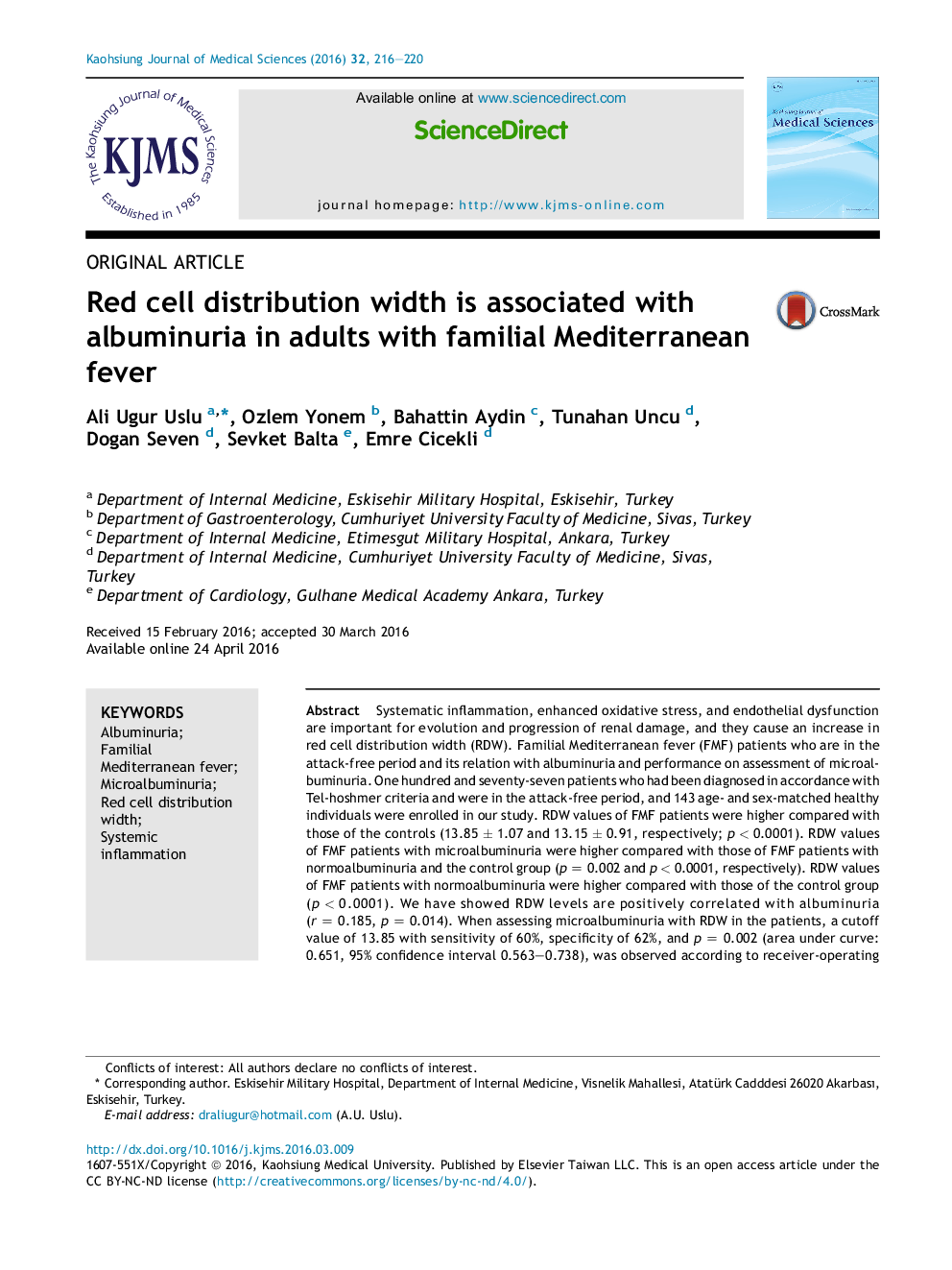| Article ID | Journal | Published Year | Pages | File Type |
|---|---|---|---|---|
| 3485110 | The Kaohsiung Journal of Medical Sciences | 2016 | 5 Pages |
Systematic inflammation, enhanced oxidative stress, and endothelial dysfunction are important for evolution and progression of renal damage, and they cause an increase in red cell distribution width (RDW). Familial Mediterranean fever (FMF) patients who are in the attack-free period and its relation with albuminuria and performance on assessment of microalbuminuria. One hundred and seventy-seven patients who had been diagnosed in accordance with Tel-hoshmer criteria and were in the attack-free period, and 143 age- and sex-matched healthy individuals were enrolled in our study. RDW values of FMF patients were higher compared with those of the controls (13.85 ± 1.07 and 13.15 ± 0.91, respectively; p < 0.0001). RDW values of FMF patients with microalbuminuria were higher compared with those of FMF patients with normoalbuminuria and the control group (p = 0.002 and p < 0.0001, respectively). RDW values of FMF patients with normoalbuminuria were higher compared with those of the control group (p < 0.0001). We have showed RDW levels are positively correlated with albuminuria (r = 0.185, p = 0.014). When assessing microalbuminuria with RDW in the patients, a cutoff value of 13.85 with sensitivity of 60%, specificity of 62%, and p = 0.002 (area under curve: 0.651, 95% confidence interval 0.563–0.738), was observed according to receiver-operating characteristic curve analysis. Among the various variables associated with albuminuria in multivariate logistic regression analyses, RDW remained an independent predictor of albuminuria (95% confidence interval 0.479–0.942, p = 0.021). RDW may be associated with albuminuria in FMF patients and it can be a predictor of microalbuminuria.
